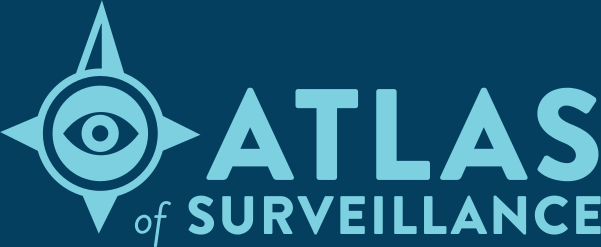About
Law enforcement surveillance isn’t always secret. These technologies can be discovered in news articles and government meeting agendas, in company press releases and social media posts. It just hasn’t been aggregated before.
That’s the starting point for the Atlas of Surveillance, a collaborative effort between the Electronic Frontier Foundation and the University of Nevada, Reno Reynolds School of Journalism. Through a combination of crowdsourcing, data journalism and public records reporting, we are creating the largest-ever repository of information on which law enforcement agencies are using what surveillance technologies. The aim is to generate a resource for journalists, academics, and, most importantly, members of the public to check what’s been purchased locally and how technologies are spreading across the country.
We specifically focused on the most pervasive technologies, including drones, body-worn cameras, face recognition, cell-site simulators, automated license plate readers, predictive policing, camera registries, and gunshot detection. Although we have amassed more than 14,900 datapoints in 6,000-plus jurisdictions, our research only reveals the tip of the iceberg and underlines the need for journalists and members of the public to continue demanding transparency from criminal justice agencies.
The Atlas of Surveillance data was last updated on December 4, 2025.
Inquiries should be directed to aos@eff.org.
Credits
The Atlas of Surveilalnce team is EFF Director of Investigations Dave Maass, Senior Investigative Researcher Beryl Lipton, Special Advisor Paul Tepper and Research Assistant Jesse Cabrera.
This project would not have been possible without the support and enthusiasm of our collegues at UNR: Dean Gi Yun; Professors Paro Pain, Patrick File, Ran Duan; lecturer Jim Scripps; former Dean Al Stavistky; former Associate Dean Donica Mensing; and many others in the UNR Reynolds School of Journalism.
More than 1,500 students, teachers, volunteers, journalists, and other researchers contributed time, passion, and data to this project.
University of Nevada, Reno Research Interns (2019 -)
Madison Vialpando, Christian Romero, Matthew King, Dominique Hall, Javier Hernandez, Hailey Rodis, Taylor Johnson, Olivia Ali, JJ Mazzucotelli, Jayme Sileo, Melanie Mendez, Jacob Kostuchowski, Michael Rubio, Dez Peltzer, Natalie Katsaros, Haley Ekberg, Jesse Cabrera and McKenna Keglovits
Student Research Volunteers (2019 -)
Tiffany Jing, Zoe Wheatcroft, Shelby Perkins, Craig Nelson
Data Tools
GovSpend
Maps powered by Esri



